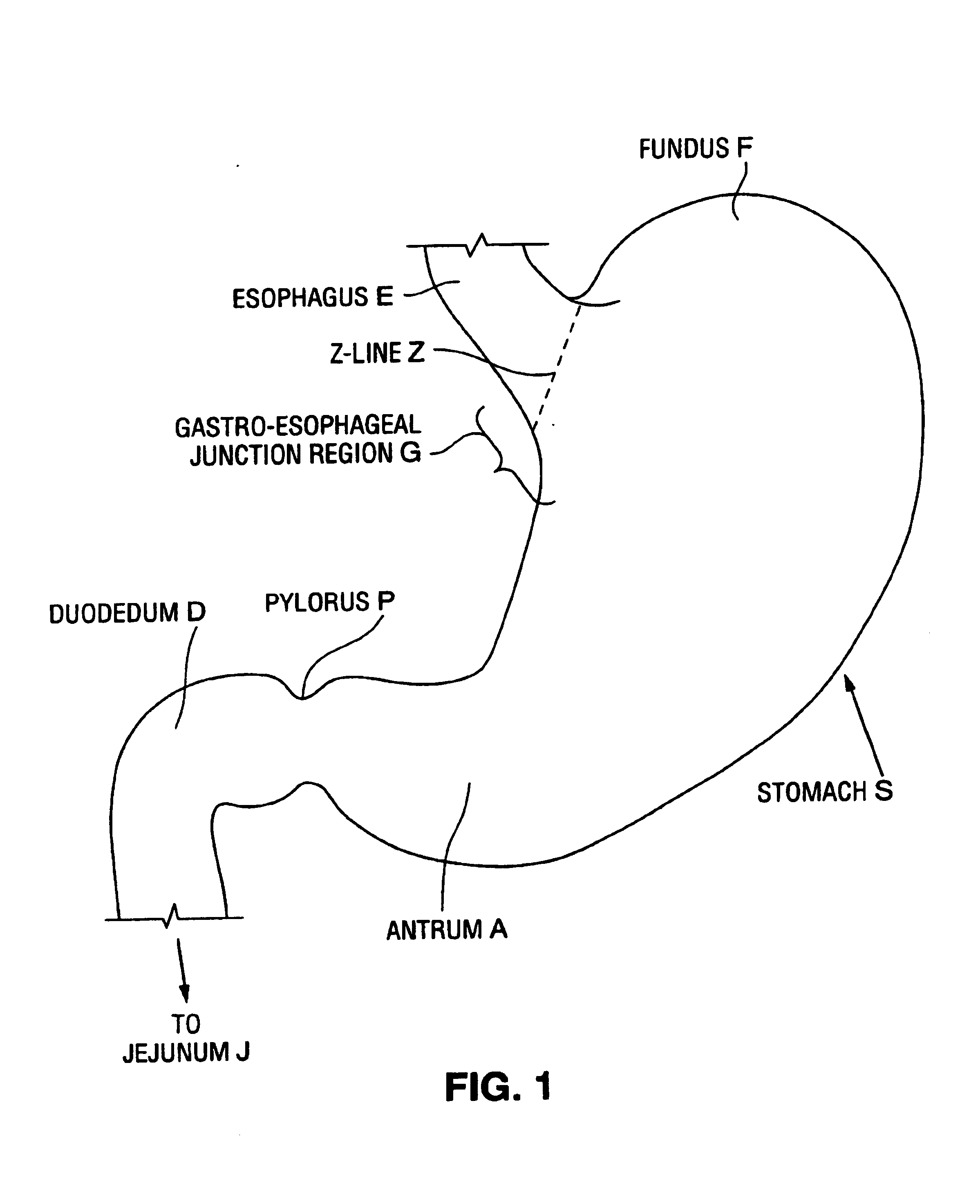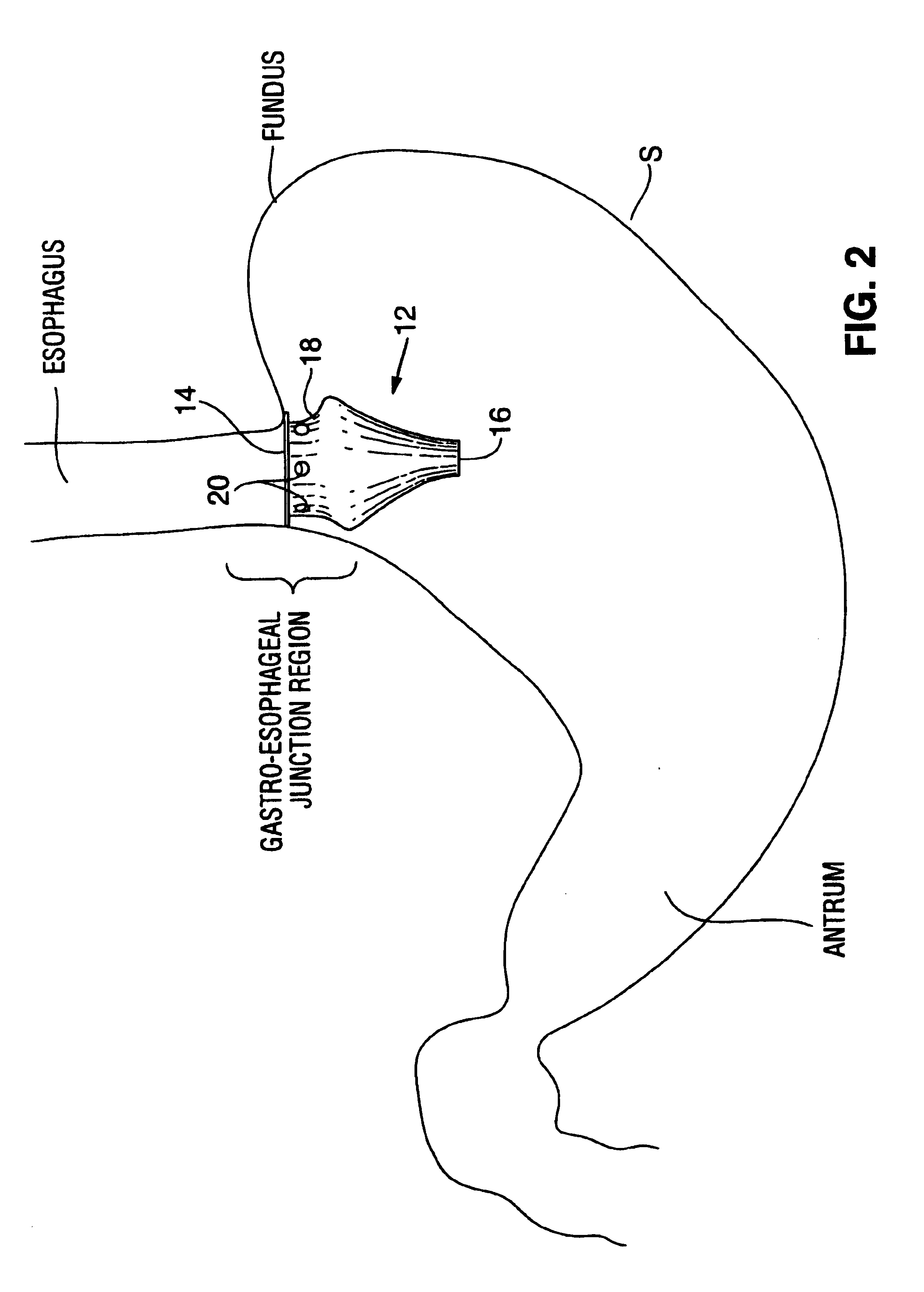Satiation devices and methods
a technology applied in the field of satiation devices and methods, can solve problems such as removal and needing removal
- Summary
- Abstract
- Description
- Claims
- Application Information
AI Technical Summary
Benefits of technology
Problems solved by technology
Method used
Image
Examples
Embodiment Construction
An anatomical view of a human stomach S and associated features is shown in FIG. 1. The esophagus E delivers food from the mouth to the stomach S. The z-line or gastro-esophageal junction Z is the irregularly-shaped border between the thin tissue of the esophagus and the thicker tissue of the stomach wall. The gastro-esophageal junction region G is the region encompassing the distal portion of the esophagus E, the z-line, and the proximal portion of the stomach S.
Various embodiments of satiation devices are described herein. Many of these devices include a pouch or funnel positioned at the gastro-esophageal junction region so as to form a small reservoir which collects masticated food from the esophagus—thereby limiting the amount of food that can be consumed at one time. Over time the food within this reservoir descends into the stomach through a distal opening in the pouch. The pouch may optionally include a tubular extension positionable within the esophagus to facilitate flow of...
PUM
 Login to View More
Login to View More Abstract
Description
Claims
Application Information
 Login to View More
Login to View More - R&D
- Intellectual Property
- Life Sciences
- Materials
- Tech Scout
- Unparalleled Data Quality
- Higher Quality Content
- 60% Fewer Hallucinations
Browse by: Latest US Patents, China's latest patents, Technical Efficacy Thesaurus, Application Domain, Technology Topic, Popular Technical Reports.
© 2025 PatSnap. All rights reserved.Legal|Privacy policy|Modern Slavery Act Transparency Statement|Sitemap|About US| Contact US: help@patsnap.com



